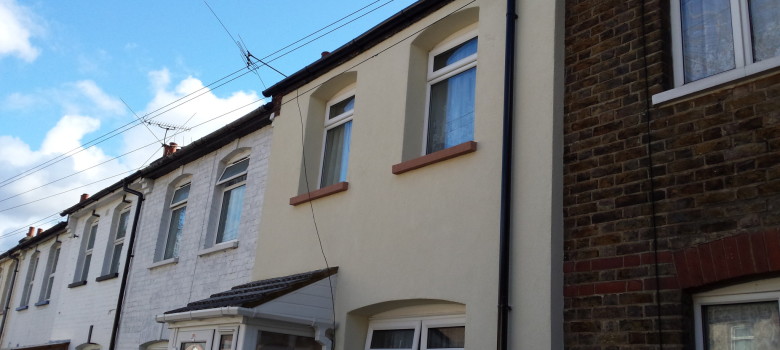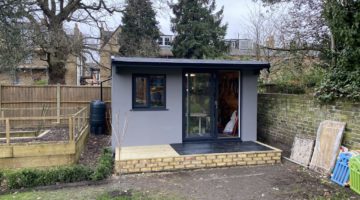
Some of our most well informed customers are very keen to ask us how we deal with ‘thermal bridging’, or ‘cold bridging’ as it is sometimes known. This is where heat can bypass the insulation on the walls and reduce its effectiveness. In some of the worst cases, this can really reduce the insulation’s properties and make you colder than you should be! Of course, insulation is better than no insulation, but best practice is to try and deal with as many of these issues as possible.
Dealing with reveals
One area where thermal bridging can be an issue is around window and door reveals. Here it is usually not possible to fully insulate with 100mm insulation. This would probably stop the door or window from opening! The best option is to insulate with 20mm XPS insulation instead, to ensure that a thermal bridge cannot occur.
Dealing with sills
Window sills are another common area for thermal bridging. Depending on the sill type, we can insulate and cap with a PVC sill, or we can insulate using XPS to maintain a stone or concrete sill look.
Dealing with fences and other abutments
Often a fence or gate will get in the way of insulating a patch of wall. Some installers will insulate around the obstruction, and this may be necessary if the obstruction is completely immovable, but it will cause a thermal bridge. Wherever possible, we will remove the fence post or gate, insulate the wall, then replace the item afterwards. This can require adjusting the length of the fence piece, or reworking the gate.
Dealing with meters and telecoms
Although it is possible to remove and replace meters and telecoms boxes, unfortunately we are not allowed to do so. In order to prevent a ‘boxed off area’ which would also be a cold bridge, we recommend to customers that they speak to the relevant authority and get them moved in advance of our install. You are typically looking at a 3 week wait and a cost as well. This is why many customers decide to go ahead without moving the meters and are happy to allow this one cold bridge.
When thermal bridging can’t be avoided
Unfortunately, there are instances where these issues cannot be solved, either due to physical constraints on the property, or because of budgetary constraints on the customers part. In these cases, we try to make sure that the bridging is mitigated as much as possible.
At one property we insulated recently, the house had concrete steps going up to the door. It was not feasible to remove them, so we insulated the sides and underneath, leaving a cold bridge on the steps –an unfortunate but unavoidable problem.












Hi,
I am looking into external insulation in case there is ever a surprise grant made available to help with the cost.
As I live in a Victorian terrace the front of the entire terrace is still it’s original stone front.
Ideally we wouldn’t want internal insulation on the front (period features inside) but a installer said that in our area people in a similar situation have only installed external insulation on the rear of the building.
Would this help at all? I thought that this would make the front rooms ‘Feel’ colder so we would have the heating on more to make it feel as warm as the rear?